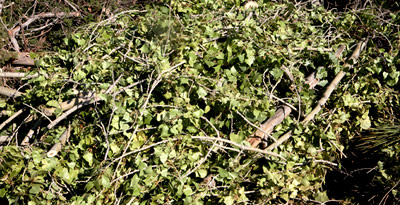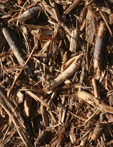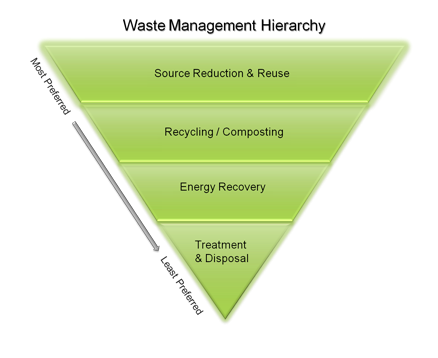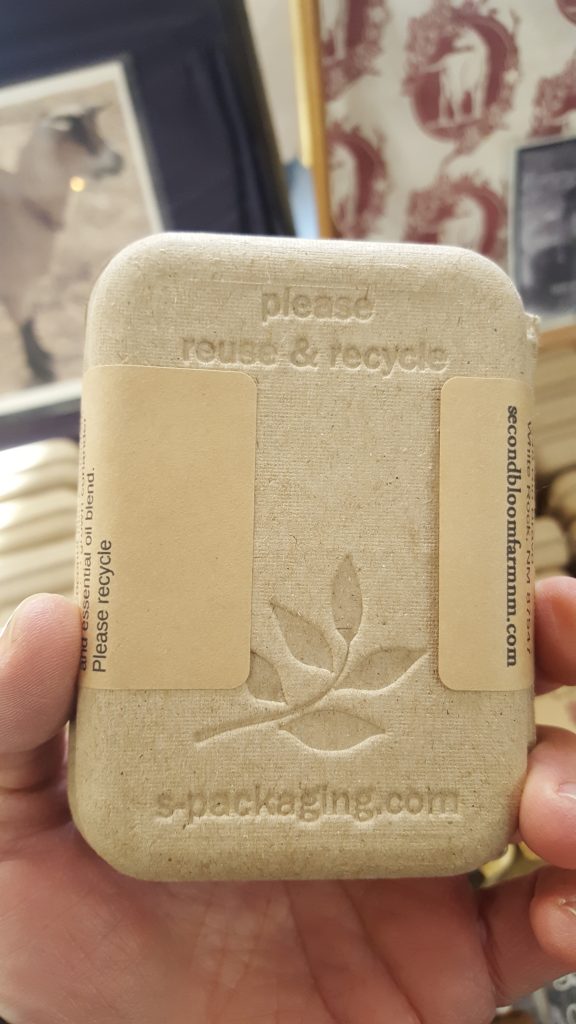
EPA
If you generate a lot of yard and food waste, consider composting! Composting is simply mixed organic matter (food waste and green waste) left to decompose, with a little elbow grease. The end product is a natural fertilizer and soil amendment for you to use in your own garden or share with your neighbors!
Composting not only prevents biodegradable waste from going to the landfill, but it also reduces the amount of synthetic fertilizers and water needed when used as a soil amendment. Whether you choose to make a pile or an aerobic bin, composting is easy and fun to watch Mother Nature take her course.
- Visit Composting Instructions for easy information on how to compost in your backyard.
- Use the New Mexico Environment Department – Backyard Composting Made Easy Brochure in English / Spanish
![]()
Just finished giving your landscape a makeover? Consider recycling yard trimmings/brush (green waste) rather than tossing it in your trash.
What Does NOT make good Mulch?
- Agave
- Cacti
- Pallets – Pallets usually have nails and are treated, which is not desired for landscape applications.
- Palm fronds – The fibers in a palm frond are too difficult to mulch or compost.
- Soil – Regardless of clean or contaminated
- Lumber – This includes plywood, sheet rock, and chipboard
- Tree Trunks & Stumps
Where can I take brush and yard trimmings?
County Transfer Stations: El Dorado, Jacona, Stanley
![]()
Composting Basics
All composting requires three basic ingredients:
- Browns – This includes materials such as dead leaves, branches, and twigs. Reducing Wasted Food Basics
- Greens – This includes materials such as grass clippings, vegetable waste, fruit scraps, and coffee grounds.
- Water – Having the right amount of water, greens, and browns is important for compost development.
Your compost pile should have an equal amount of browns to greens. You should also alternate layers of organic materials of different-sized particles. The brown materials provide carbon for your compost, the green materials provide nitrogen, and the water provides moisture to help break down the organic matter. (Source)
![]()
Greens for Your Compost Bin
“Greens” are the nitrogen-rich additions to your compost pile. These tend to have lots of moisture, break down quickly, and provide a quick burst of heat to your pile. While we call them “greens,” technically any plant matter will work here: coffee grounds, for example, are brown in color, but they’re rich in nitrogen, hence, they’re a “green.” Here are some ideas of greens for your pile:
- Fruit and vegetable peels
- Citrus rinds
- Melon rinds
- Coffee grounds
- Tea leaves/tea bags
- Old vegetables from the crisper
- Houseplant trimmings
- Weeds that haven’t gone to seed
- Grass clippings
- Fresh leaves
- Deadheads from flowers
- Dead plants (as long as they aren’t diseased)
- Seaweed
- Cooked plain rice
- Cooked plain pasta
- Stale bread
- Corn husks
- Corn cobs
- Broccoli stalks
- Sod that you’ve removed to make new garden beds
- Thinnings from the vegetable garden
- Spent bulbs that you used for forcing indoors
- Holiday greenery (from wreaths and swags, for example) — just be sure to cut the stems off of the wreath form or wires first)
- Old, less flavorful packaged herbs and spices
- Egg shells
Browns for Your Compost Bin
“Browns” are the carbon-rich materials in your compost that add aeration to the pile and structure to your compost.
They break down more slowly, so it’s a good idea to chop them up fairly small if you’re able to. Here are some browns to put in your compost pile:
- Shredded newspaper
- Shredded office paper/school papers
- Shredded, non-glossy junk mail
- Torn up plain corrugated cardboard boxes (not with glossy coatings)
- Straw
- Bedding from hamsters, guinea pigs, rabbits
- Fall leaves
- Chopped up twigs and small branches
- Pine cones
- Nut shells (avoid walnut shells as they can inhibit plant growth)
- Excelsior
- Raffia
- Used napkins
- Toilet paper, paper towel, or wrapping paper tubes (cardboard>
- Fallen bird’s nests
- Pine needles/pine straw
- Paper coffee filters (used)
- Pressed paper egg cartons, torn into small pieces
- Sawdust (only from untreated wood)
- Brown paper shopping bags, shredded/torn
- Brown paper lunch bags, shredded/torn
- Leftover peat or coir from seed starting
This list is a good starting point for safe, common things you can compost. As you can see, there are many common household items we can compost rather than throw into the trash. (Source)
![]()



